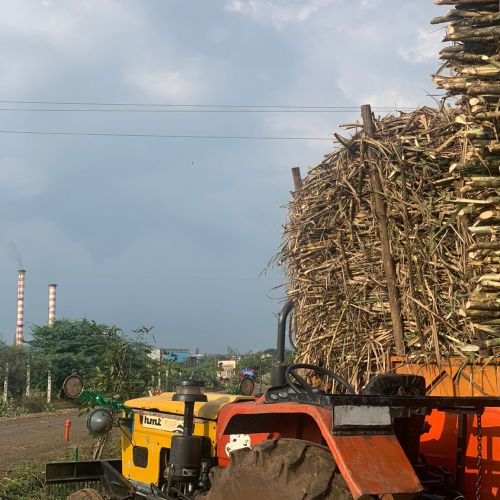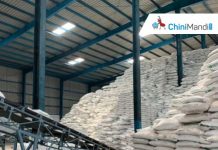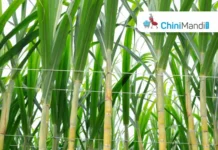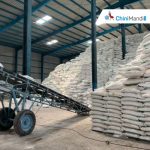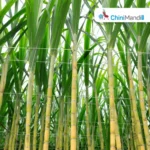Most Indians have a sweet tooth. The USDA Foreign Agricultural Service reckons that Indians cumulatively guzzle 26.5 million tonnes of sugar every year, making the country the highest sugar consumer in the world. India is also the second-largest producer of sugar.
In what could be a poll sweetener, the government announced on July 18 that the fair and remunerative price (FRP) of sugarcane will be hiked to Rs 275 per quintal for 2018-19.
The revision in FRP set a basic recovery rate of 10 percent based on the recommendations of the Commission for Agricultural Costs and Prices (CACP). This represents a rise of 7.8 percent year-on-year compared to FRP for the last year.
According to CARE Ratings, the average cost of production for 2018-19 is Rs 155 per quintal. The revised FRP is 77.4 percent more than the cost of production, and on the whole, will provide farmers greater margins over their input costs.
What is the difference between MSP and FRP?
The hike in FRP for sugarcane should be seen in concordance with a similar hike in the minimum support price (MSP) of kharif crops for the FY 2018-19. The MSP was raised in a staggered manner, with the minimum value of some crops being raised by a measly 1 percent, while others saw their stock soar by as much as 50 percent.
What is perplexing is that while the FRP of sugarcane was raised by 7.8 percent, the MSP of sugarcane – the raw material in the production of sugar – will see a hike of between 1 percent and 10 percent. contradictory or do they supplement each other in guaranteeing a fair price for farmers?
Consider a situation where the prevailing MSP regime is such that a farmer is paid 50 percent more than the input costs. The calculations take into account the different costs accumulated between sowing and harvesting. These include the cost of leasing land, interest rate on loans, and labour costs.
FRP is used in the sugarcane industry as an alternative to MSP. It traces its origins to the Rangarajan Committee report which found that almost three-quarters of the input cost in producing sugar comes from purchasing sugarcane.
Members of the committee reached a consensus that the value created in the form of revenue in the sugarcane value chain between farmers and millers ought to be shared in an equitable manner. To determine the exact level of cane dues to be paid to farmers for their produce, the Committee decided that revenue was to be split in the ratio of their relative costs.
The costs incurred by sugarcane farmers and millers were analyzed by the committee, by taking a recovery rate of 10.31 percent. The recovery rate is defined as the amount of sugar produced by crushing a given amount of sugarcane by weight. For example, if 500 lakh tonnes of sugarcane is used to produce 50 lakh tonnes of refined sugar, the recovery rate is 10 percent.
By taking the average recovery rate among mills in different states as 10.31 percent, the committee pegged the revenue sharing ratio between farmers and millers at 69:31, which works out to 70:30, when rounded off.
This value-sharing arrangement is applicable not just for the revenue generated from sugar, but from primary by-products that are sold in the open market. These include bagasse, molasses and press mud. Bagasse is used as an alternate fuel and in the production of paper, while molasses are used by distilleries.
The committee suggested that 70 percent of the final value of sugar and each of its three major by-products be fixed as the final cane dues to the farmers supplying sugarcane. However, the quorum found that if the revenue from by-products is taken into account, the value-sharing ratio for farmers will roughly amount to 75 percent of the ex-mill value of sugar.
The final recommendation of the Rangarajan committee was that the ratio of revenue sharing was to be adhered to and under all circumstances, farmers were to be paid up-front, the Fair and Remunerative Price for their produce.
The FRP is useful when the price of sugar is high. This means that in absolute terms, the revenue shared with farmers will be greater. However, the tables are turned when the market price of sugar is low. In this case, the FRP for sugarcane will be less, even if the revenue is shared in a 70:30 ratio.
To safeguard the interest of farmers, if the FRP is lower than the MSP, mills will be forced to pay the MSP on sugarcane procured from farmers. This is detrimental for the financial health of sugar mills since they will have to pay more to farmers in a year where there is a supply-side glut and the price of sugar is low.
How much sugar does India produce?
Sugar mills across the country produced 32.3 million tonnes of sugar, 59 percent more than the year-ago period. Correspondingly, the 355.1 million tonnes of sugarcane was procured. This implies that the recovery rate for the year was 9.1 percent.
This sharp spike in production has led to a supply-side glut, leading to a depression in prices. If this weren’t enough, industry body Indian Sugar Mills Association (ISMA) estimates that production for 2018-19 will go up to around 35 million tonnes on account of greater acreage under sugarcane.
ISMA reckons that at 54.4 lakh hectares, the area under sugarcane in 2018-19 will be 10.1 percent more than last year. The industry body also estimates consumption to stand at 25.6 million tonnes. This implies that the country will have a surplus of 9.4 million tonnes (35 million tonnes – 25.6 million tonnes).
Furthermore, the surplus from the existing fiscal, which stands at 11.1 million tonnes will be carried over into 2018-19, taking the overall additional stock to 20.5 million tonnes. These figures take into account that exports will remain constant in the coming year as well. The net effect of greater acreage under sugarcane, a good monsoon, bumper crops, and surplus of sugar produced by mills, will be to lower the price of sugar in the domestic market.
Sugar produce
In 2016-17, when only 20.3 million tonnes of sugar was produced, the price of sugar was Rs 3,792 per tonne, according to data compiled by Centre for Monitoring Indian Economy (CMIE). With production increasing to 32.3 million tonnes in 2017-18, prices started to go down, averaging Rs 3,229 per tonne between October 2017 and July 2018.
The trend over the past few years has been an increase in prices. This has led to a sizeable accumulation of sugarcane arrears to be paid farmers. With demand expected to be flat, a glut in production could reverse that trend.
Sugarcane arrears
There is an inverse correlation between sugarcane arrears due farmers and the final price of sugar in the open market. When the price of sugar touched a low of Rs 26.1 per kg in 2014-15, cane arrears touched a high of Rs 20,099 crore. By observing the earlier graph, we can see that the price of sugar per tonne was at a five-year low of Rs 2,610 per tonne in 2014-15.
Similarly, arrears declined to Rs 9,526 crore in 2016-17 when sugar prices touched a five-year high of Rs 3,792 per tonne.
As on July 18, 2018, sugarcane arrears stood at Rs 17,842 crore. The government’s Rs 7,000 crore package for the sugar industry and fixing the MSP for sugarcane at Rs 29 per kg are believed to have contributed to slashing outstanding dues to farmers.
How are sugar mills faring?
After posting robust gains in 2016-17, the sugar industry has slipped back to the red in 2017-18. On a year-on-year basis, sugar sales fell by 5.4 percent and the industry made losses amounting to 10.6 percent of sales. The financial performance figures quoted represent the average of 23 companies included in survey by CARE Ratings. The incongruity in the price of sugar and sugarcane is believed to be detrimental to the financial performance of mills.
How will the FRP hike affect sugar mills?
According to a report by CARE Ratings, the cost of raw materials account for 85 percent of the total expenses in manufacturing sugar. In 2017-18, the total cost of sugarcane in producing one tonne of sugar was Rs 26,840. This implies that if the cost of raw material is fixed at 85 percent of total expenses, the cost of producing sugar will amount to Rs 31.6 per kg.
An increase in the FRP of sugarcane will likely lead to an increase in the cost of production of sugar since procurement cost of cane will go up. With production cost expected to rise to Rs 2,750 per tonne, the cost of producing sugar is likely to go up to Rs 32.4 per kg.
On the whole, greater production costs do not augur well for sugar mills. Sugar prices are likely to hover around the Rs 31 mark, thereby making it difficult for mills to cover the cost of production. A hike in FRP for sugarcane coupled with a fixed MSP of Rs 29 per kg will add to the pressure on prices are stretch the finances of mills.

